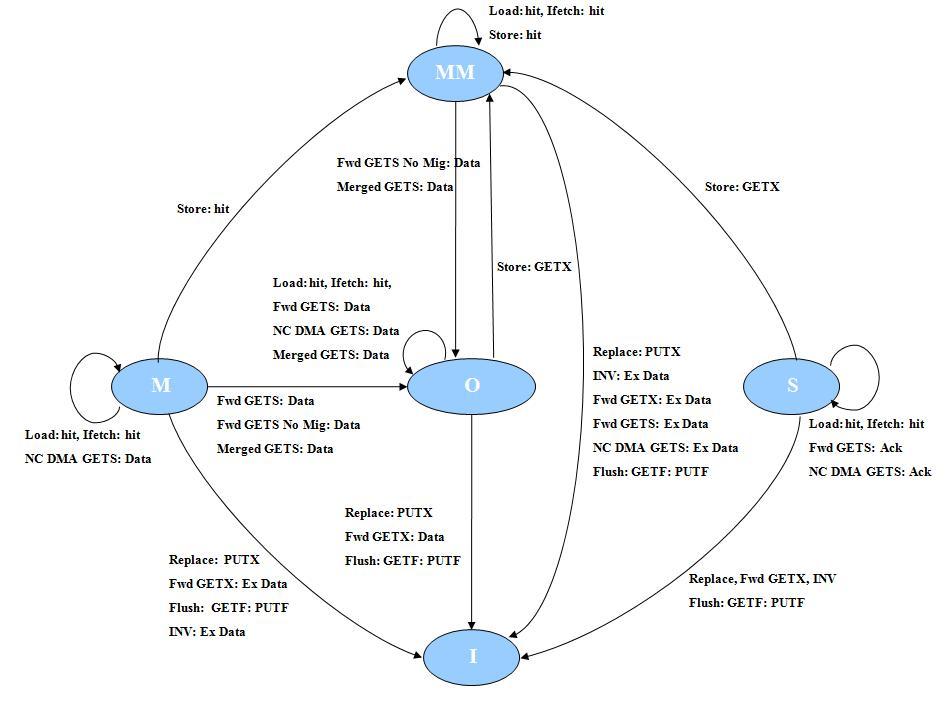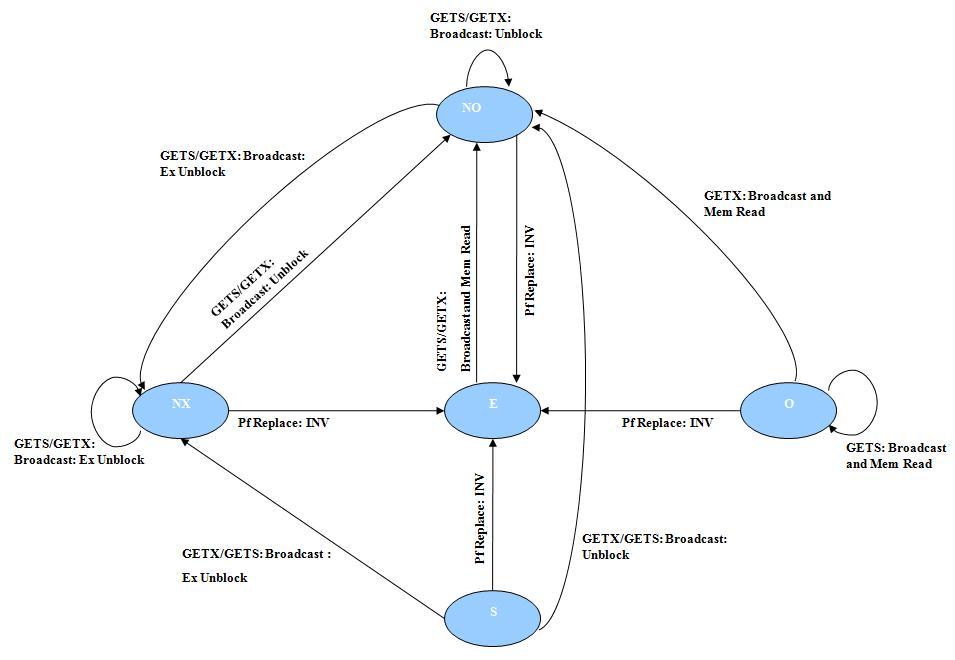Difference between revisions of "MOESI hammer"
Nilayvaish (talk | contribs) (Added a separate page for MOESI hammer protocol.) |
(No difference)
|
Latest revision as of 23:25, 8 July 2013
This is an implementation of AMD's Hammer protocol, which is used in AMD's Hammer chip (also know as the Opteron or Athlon 64). The protocol implements both the original a HyperTransport protocol, as well as the more recent ProbeFilter protocol. The protocol also includes a full-bit directory mode.
Contents
Related Files
- src/mem/protocols
- MOESI_hammer-cache.sm: cache controller specification
- MOESI_hammer-dir.sm: directory controller specification
- MOESI_hammer-dma.sm: dma controller specification
- MOESI_hammer-msg.sm: message type specification
- MOESI_hammer.slicc: container file
Cache Hierarchy
This protocol implements a 2-level private cache hierarchy. It assigns separate Instruction and Data L1 caches, and a unified L2 cache to each core. These caches are private to each core and are controlled with one shared cache controller. This protocol enforce exclusion between L1 and L2 caches.
Stable States and Invariants
| States | Invariants |
|---|---|
| MM | The cache block is held exclusively by this node and is potentially locally modified (similar to conventional "M" state). |
| O | The cache block is owned by this node. It has not been modified by this node. No other node holds this block in exclusive mode, but sharers potentially exist. |
| M | The cache block is held in exclusive mode, but not written to (similar to conventional "E" state). No other node holds a copy of this block. Stores are not allowed in this state. |
| S | The cache line holds the most recent, correct copy of the data. Other processors in the system may hold copies of the data in the shared state, as well. The cache line can be read, but not written in this state. |
| I | The cache line is invalid and does not hold a valid copy of the data. |
Cache controller
The notation used in the controller FSM diagrams is described here.
MOESI_hammer supports cache flushing. To flush a cache line, the cache controller first issues a GETF request to the directory to block the line until the flushing is completed. It then issues a PUTF and writes back the cache line.
Directory controller
MOESI_hammer memory module, unlike a typical directory protocol, does not contain any directory state and instead broadcasts requests to all the processors in the system. In parallel, it fetches the data from the DRAM and forward the response to the requesters.
probe filter: TODO
- Stable States and Invariants
| States | Invariants |
|---|---|
| NX | Not Owner, probe filter entry exists, block in O at Owner. |
| NO | Not Owner, probe filter entry exists, block in E/M at Owner. |
| S | Data clean, probe filter entry exists pointing to the current owner. |
| O | Data clean, probe filter entry exists. |
| E | Exclusive Owner, no probe filter entry. |
- Controller
The notation used in the controller FSM diagrams is described here.

